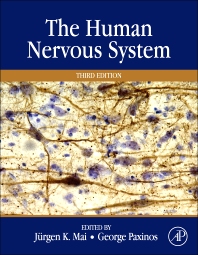Books in Neuroanatomy
Books in Neuroanatomy
- 4th Edition
- July 1, 2014
- George Paxinos
- English
- eBook9 7 8 0 0 8 0 9 2 1 3 7 2

The Rat Nervous System
- 2nd Edition
- April 24, 2014
- J. L. Wilkinson
- English
- eBook9 7 8 1 4 8 3 1 8 3 9 1 6

Neuroanatomy for Medical Students
- 1st Edition
- November 16, 2013
- Virginia M. Pickel + 1 more
- English
- Hardback9 7 8 0 1 2 4 1 8 6 7 5 0

The Synapse
- 1st Edition
- November 11, 2013
- John R. Smythies + 2 more
- English
- Hardback9 7 8 0 1 2 4 0 4 5 6 6 8
- eBook9 7 8 0 1 2 4 0 4 7 2 2 8

The Claustrum
- 1st Edition
- October 28, 2013
- Michael Petrides
- English
- Hardback9 7 8 0 1 2 4 0 5 5 1 4 8
- eBook9 7 8 0 1 2 4 0 5 9 3 1 3

Neuroanatomy of Language Regions of the Human Brain
- 7th Edition
- October 24, 2013
- George Paxinos + 1 more
- English
- eBook9 7 8 0 1 2 4 1 5 7 5 2 1

The Rat Brain in Stereotaxic Coordinates
- 1st Edition
- September 24, 2013
- J. Wilh. Hultkrantz
- English
- eBook9 7 8 1 4 8 3 1 9 4 2 6 4

Brain Preparations
- 2nd Edition
- April 23, 2012
- Kadharbatcha S. Saleem + 1 more
- English
- eBook9 7 8 0 1 2 3 8 5 0 8 8 1

A Combined MRI and Histology Atlas of the Rhesus Monkey Brain in Stereotaxic Coordinates
- 3rd Edition
- November 14, 2011
- Juergen K Mai + 1 more
- English
- Hardback9 7 8 0 1 2 3 7 4 2 3 6 0
- eBook9 7 8 0 0 8 0 9 2 1 3 0 3

The Human Nervous System
- 1st Edition
- October 11, 2011
- Michael Petrides
- English
- Hardback9 7 8 0 1 2 3 8 6 9 3 8 8
